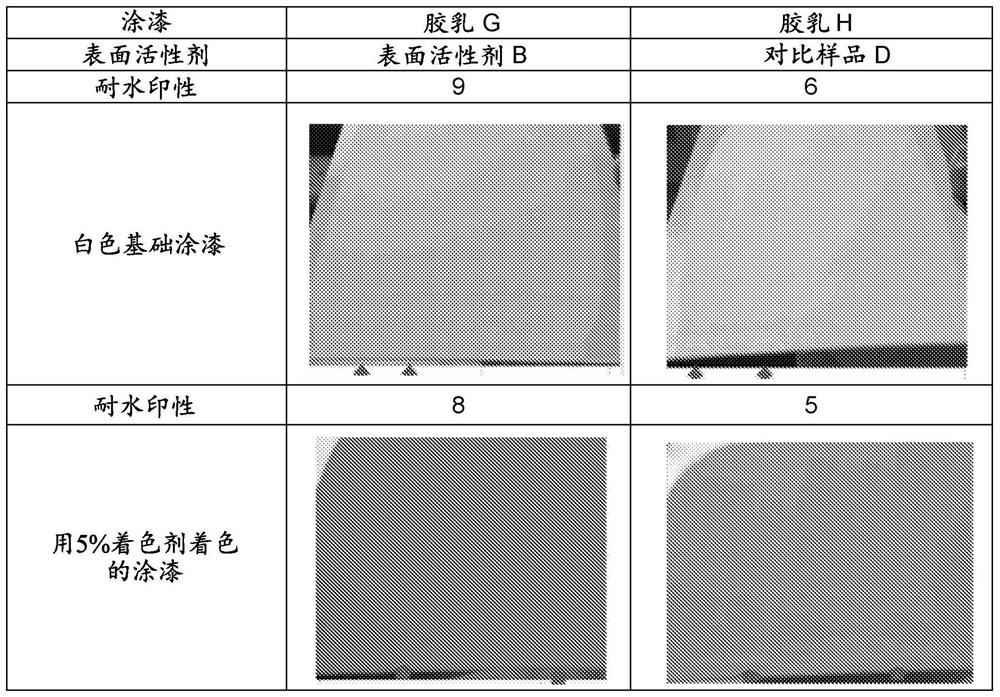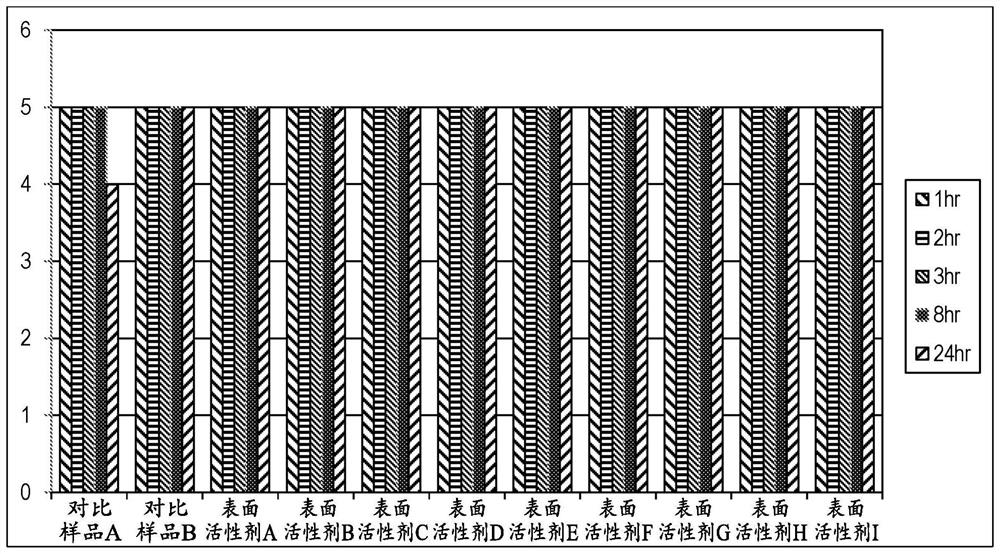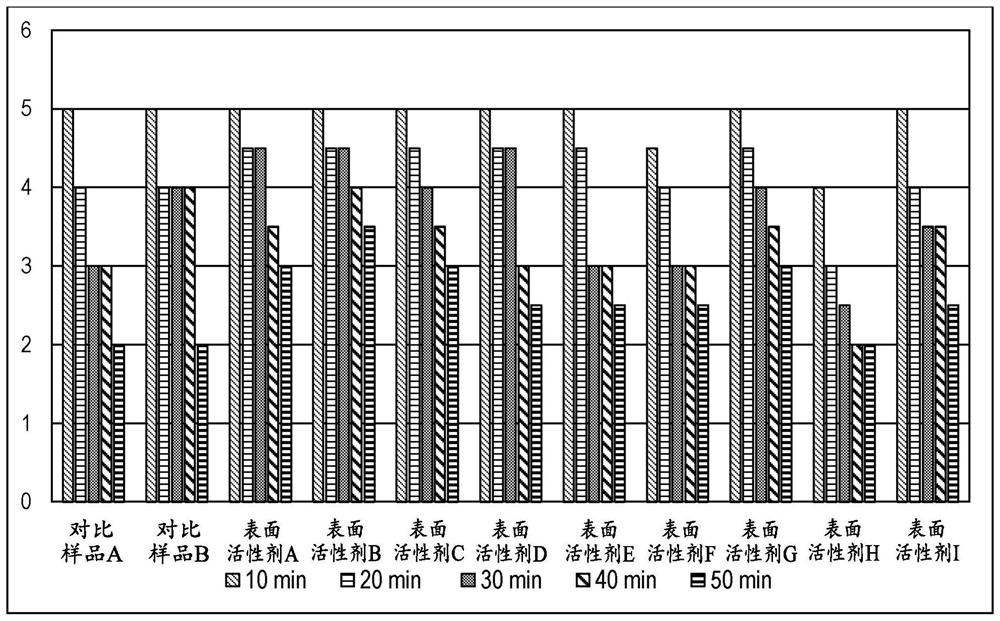Polymerizable surfactants having water whitening resistance and methods for use
A surfactant and polymer technology, used in ester copolymer adhesives, chemical instruments and methods, grafted polymer adhesives, etc., can solve the problems of film turbidity, loss of original luster, and whitening.
- Summary
- Abstract
- Description
- Claims
- Application Information
AI Technical Summary
Problems solved by technology
Method used
Image
Examples
example
[0087] Preparation of polymerizable surfactants
example 1
[0088] Example 1. Polymerizable Surfactant C 12 C 14 - Preparation of 2.6AGE-15EO ammonium sulfate salt
[0089] 10.0 g of 45% potassium hydroxide solution was added to 320 g of Alfol 1214 and stirred in the reactor at 80°C with nitrogen purging under the surface. After heating to 100°C, the gas flow was stopped and the flask was evacuated to approximately 20"Hg using a vacuum pump. After one hour, the vacuum was broken with nitrogen and a sample was analyzed by Karl-Fischer titration for a moisture content of 0.09%.
[0090] In the temperature range of 95°C - 105°C, 470.1 g of allyl glycidyl ether was added to the reactor within 120 minutes. After 30 minutes, the reactor contents were heated to 120°C. After an additional six hours at a temperature ranging from 120°C to 123°C, a sample of the reactor contents was titrated to a naphthol benzyl alcohol indicator using 0.1 M perchloric acid in acetic acid and in the presence of tetrabutylammonium bromide A basicity of 0.101 m...
example 2
[0094] Example 2. Preparation of polymerizable surfactant Nopol-2.6AGE-15EO ammonium sulfate
[0095] 11.1 g of 45% potassium hydroxide solution were added to 283 g of nopol alcohol and stirred in the reactor at 100° C. with a nitrogen blanket. The gas flow was stopped and the flask was evacuated to approximately 22"Hg using a vacuum pump. After one hour, the vacuum was broken with nitrogen and a sample was analyzed by Karl-Fischer titration for a moisture content of 0.06%.
[0096] In the temperature range of 93°C-96°C, 505.8 g of allyl glycidyl ether was added to the reactor over 120 minutes. After 30 minutes, the reactor contents were heated to 120°C. After an additional five hours in the temperature range of 118°C-120°C, a sample of the reactor contents was titrated to a naphthol benzyl alcohol indicator using 0.1 M perchloric acid in acetic acid and in the presence of tetrabutylammonium bromide A basicity of 0.125 mmol / g was exhibited, indicating essentially complete re...
PUM
| Property | Measurement | Unit |
|---|---|---|
| particle size | aaaaa | aaaaa |
Abstract
Description
Claims
Application Information
 Login to View More
Login to View More - R&D
- Intellectual Property
- Life Sciences
- Materials
- Tech Scout
- Unparalleled Data Quality
- Higher Quality Content
- 60% Fewer Hallucinations
Browse by: Latest US Patents, China's latest patents, Technical Efficacy Thesaurus, Application Domain, Technology Topic, Popular Technical Reports.
© 2025 PatSnap. All rights reserved.Legal|Privacy policy|Modern Slavery Act Transparency Statement|Sitemap|About US| Contact US: help@patsnap.com



